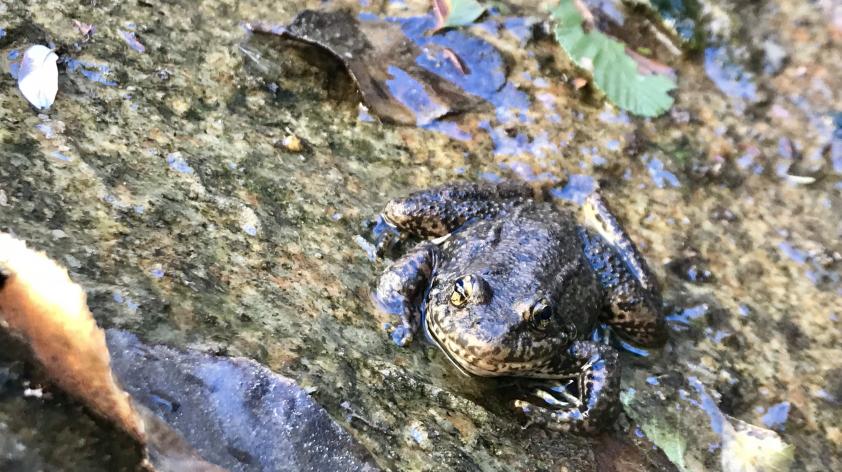
While the Frogs Sleep, the Work Continues
When you think of hibernation, it’s typical to imagine a bear, chipmunk, or another furry mammal waiting out the winter in a terrestrial den. Mammals living in cooler parts of the world may be the most well-known hibernators, but many organisms exhibit some form of hibernation, including plants, insects, and even amphibians.
In amphibians and reptiles, hibernation is known as “brumation.” These animals are adapted to a variety of habitats, and many inhabit places where they’ve had to get used to cold winters. This includes frogs living in the high elevation mountains of California, like the endangered mountain yellow-legged frog (Rana muscosa) of southern California.
At the San Diego Zoo Institute for Conservation Research (ICR) hundreds of mountain yellow-legged frogs are captive bred, reared, and reintroduced into the wild each year in an effort to bolster and re-establish populations of this species in the wild. At the last estimate, only 200 wild mountain yellow-legged frogs remain in their habitats in southern California.
When breeding and rearing animals in captivity that are destined for reintroduction into the wild, it’s critical to maintain naturalistic environments, even when natural conditions seem adverse.
For example, captive mountain yellow-legged frogs at ICR are provided with a diversity of food sources, vegetative cover, and habitat types. All of these things seem clearly positive and enriching for captive animals, but the frogs are also exposed to predator cues and – in the winter – to near-freezing temperatures, with no food and little light. While these conditions may seem harsh, they are actually beneficial, making animals better prepared for the wild environments into which they’ll be released.
A few years ago, researchers at the Institute for Conservation Research discovered that mountain yellow-legged frogs that hibernate through the winter are more likely to successfully reproduce when they wake up in the spring, in comparison to animals that experienced warm winter temperatures. More recently, new research has revealed that hibernated frogs also appear to survive better after release into the wild, in comparison to un-hibernated frogs.
The captive mountain yellow-legged frogs are now hibernated every year. Right now, over 300 captive animals are “sleeping” in chilly, 40-degree water as they wait for the spring to arrive.
These animals will go for over three months without food, their metabolism so slowed down that they won’t need to eat. In late March, the frogs will be slowly warmed up to 60-degrees, fed a wide variety of insects, and put through “froggy boot-camp” (predator recognition training and exposure to naturalistic environmental conditions) to prepare them for release into the wild.
While the mountain yellow-legged frogs are hibernating, the work to conserve this species continues.
Currently the frog team is developing new captive enrichment tools, including rock refuge walls and increased water flow so that tanks better replicate the frogs’ natural stream habitats.
The team is also continuing to train dogs to detect mountain yellow-legged frogs by scent. Mountain yellow-legged frogs are named for their moss-like skin patterning (their latin species name, muscosa, means “mossy”), and can be very difficult to see in their natural habitat.
A team of six dogs – including two border collies, a cattle dog, a hound mix, an Australian shepherd, and a Chihuahua – is currently training at a variety of sites with scent swabs collected from the captive frogs. In the summer, these scent detection dogs will be brought into the field to help increase detection of frogs.
Look forward to more updates on the “frog dogs” in a future blog post.













